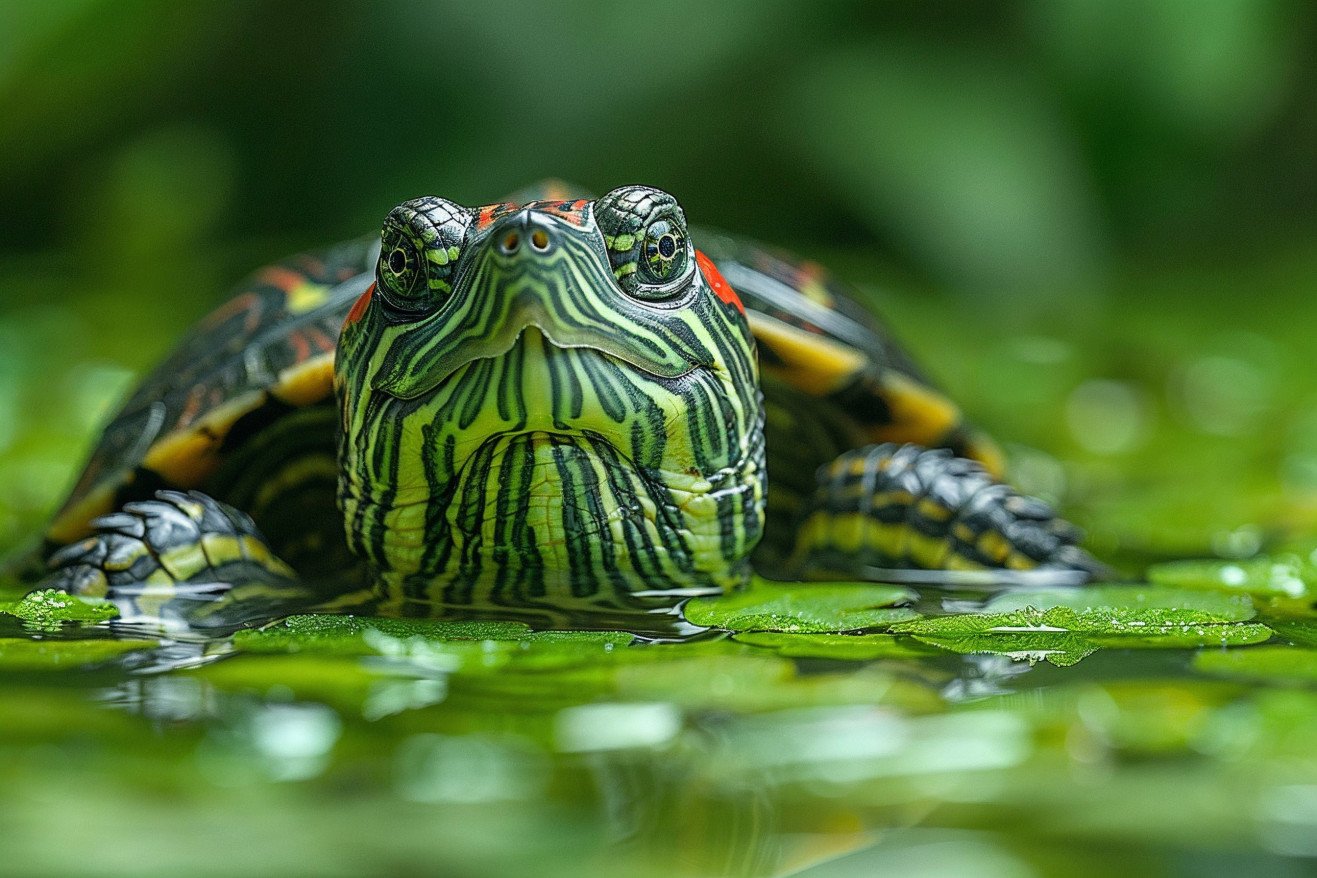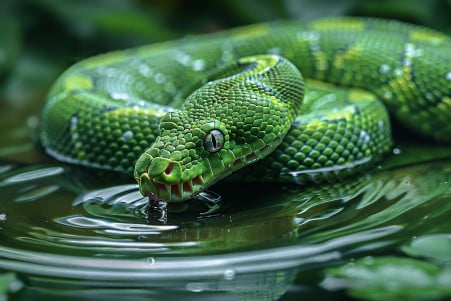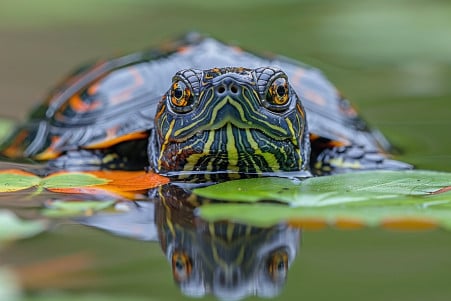How Do Turtles Drink Water? Exploring Their Aquatic Adaptations
30 May 2024 • Updated 30 May 2024

If you’ve ever watched a turtle, you may have found yourself asking how these semi-aquatic creatures actually drink water and keep themselves hydrated. The truth is that turtles have a number of biological adaptations and behaviors that help them maintain their fluid levels. Turtles drink water through their mouths, but they also absorb moisture through cloacal cavities and even shed tears.
To better understand this interesting topic, this article will draw on research from several scientific disciplines, including evolutionary biology, environmental adaptation, and veterinary science in the care of reptiles. This work will help to explain the many special characteristics that have helped turtles become successful in both aquatic and terrestrial environments, including their ability to maintain their fluid levels in a variety of ways. After learning about these findings, you’ll have a new understanding of the many ways in which nature has helped its creatures adapt to their surroundings.
Do Turtles Drink Water?
Aquatic Turtle Hydration: Drinking and Absorbing Water
Sea turtles are adapted to stay hydrated in salty ocean waters. They drink seawater directly and have salt glands located near their eyes that allow them to excrete excess salt, a process that leads to the tears that are often seen running down their faces. Freshwater turtles, however, absorb water through their skin and cloacal cavities and drink water from their environment.
For pet aquatic turtles, the water in their tank is the primary source of hydration. It is important to make sure that the water in their tank is deep enough and has enough surface area to allow for proper swimming and diving to ensure that they can stay hydrated. Housing guidelines recommend a water depth that is 1.5-2 times the turtle's shell length and a swimming area that is 4-6 times the turtle's length. It's also important to keep the water clean since turtles eat and defecate in the same water. Additionally, sudden changes in water temperature can stress a turtle's immune system and slow down their digestive system, so it's important to make sure that any new water is warmed up before it's added to the tank.
Signs of dehydration in aquatic turtles include lethargy, sunken eyes, and wrinkled skin. Making sure that the water in the tank is clean and at the right temperature and that the tank has an effective filtration system are all important ways to make sure that your turtle stays hydrated and healthy. Hydration is an important part of their care and helps them stay healthy and happy in their aquatic environment.
Terrestrial Turtle Hydration: Drinking and Soaking
Box turtles and other terrestrial turtle species will drink water from shallow dishes or natural water sources in their environment. The Spruce Pets explains that a constant, clean water dish and regular misting can help ensure that these turtles are hydrated. Soaking in shallow water can also help terrestrial turtles stay hydrated and aid in shedding.
Dehydration in terrestrial turtles can be indicated by sunken eyes, wrinkled skin, lack of energy, and a lack of appetite. Pets on Mom.com explains that proper humidity and water sources are important for their health. The Bio Dude explains that making sure that husbandry issues like humidity, water access, and substrate are taken care of can help prevent dehydration in terrestrial turtles.
Turtle Anatomy and Water Intake
Because turtles don’t have salivary glands, they need water to help them swallow and digest their food. Science ABC explains that when turtles take in food through their mouth, they hold it in place between their tongue and the upper palate and then spit out the excess water. The tongue and other mouth structures are specialized to help turtles drink water and spit out excess water while eating.
Once the food is in the esophagus, there are long conical projections called papillae that are oriented toward the stomach to prevent the food from moving back into the mouth. The research explains that these esophageal papillae also serve as a filter, pressing out the remaining water so the turtle can expel it without losing the food.
Turtles have also developed a number of anatomical adaptations, such as salt glands, to help them maintain their water balance. A study in the Journal of Experimental Biology showed that sea turtles have salt glands near their eyes that are specifically designed to excrete excess salt. These adaptations have helped turtles live in a wide range of aquatic and terrestrial habitats.
How Much Water Do Different Turtles Need?
The amount of water that turtles need depends on their species, diet, environment, and age. For example, PetMD explains that aquatic turtles, such as pond turtles, cooters, and stinkpots, need more water than land turtles because they need enough water to swim and dive. On the other hand, the Florida Fish and Wildlife Conservation Commission notes that softshell turtles have a more flexible, leathery shell that allows them to swim.
In addition, the water needs of baby and young turtles may be different from those of adult turtles. The United Parks & Resorts explains that sea turtles can live in the ocean without access to freshwater because they get the water they need from their food and by metabolizing seawater. Some turtles, like the mata mata turtle, have specific habitat needs that need to be met.
Regardless of whether a turtle is aquatic or land-based, it's important to make sure that they have access to the right water sources, water quality, and environmental conditions. This can help ensure that turtles are healthy and happy. Knowing the different water needs of turtles can help make this happen.
How to Keep Pet Turtles Hydrated
Keeping pet turtles properly hydrated is critical to their health and well-being, regardless of whether they are aquatic or land-dwelling species. For example, VCA Animal Hospitals recommends that box turtles have access to fresh water at all times. Not only do box turtles drink from their water bowls, but they also soak in them. To accommodate this, they suggest using a shallow dish, crock, or pan with a "ramp" that allows the turtle to get in and out of the water easily. The water should be deep enough to reach the turtle's chin.
In addition to ensuring that the water is clean, it's important to make sure that the water quality is maintained. This is especially true because, as PetMD explains, while many pet turtles are strong swimmers, they can't breathe underwater like fish. This means that the water in their tanks needs to be cleaned and changed regularly to avoid problems like shell pyramiding. The same is true for the humidity and temperature levels in the turtle's habitat. According to The Bio Dude, these need to be kept within the appropriate ranges as well.
In addition to making sure that turtles have access to a variety of water sources, it can help to feed them a diet that includes water-rich foods. Meanwhile, Pets on Mom.com cautions that pet turtle owners should be on the lookout for signs of dehydration, including sunken eyes, wrinkled skin, lethargy, and a loss of appetite, and act quickly if they notice any of these symptoms. By making sure that pet turtles have access to the right water sources and environmental conditions and that they are eating the right foods, pet owners can make sure that their turtles are properly hydrated.
Conclusion: The Amazing Ways Turtles Adapt to Hydration
Turtles have adapted in amazing ways to secure and control their water intake in a variety of environments. From salt glands to specialized mouth structures, these adaptations enable turtles to thrive in aquatic and terrestrial habitats.
Understanding turtle hydration provides insights into their resilience and the wonders of evolutionary biology. Proper hydration is essential for the health and well-being of turtles, both in the wild and in captivity. By appreciating these adaptations, we can better protect and care for these fascinating reptiles.


